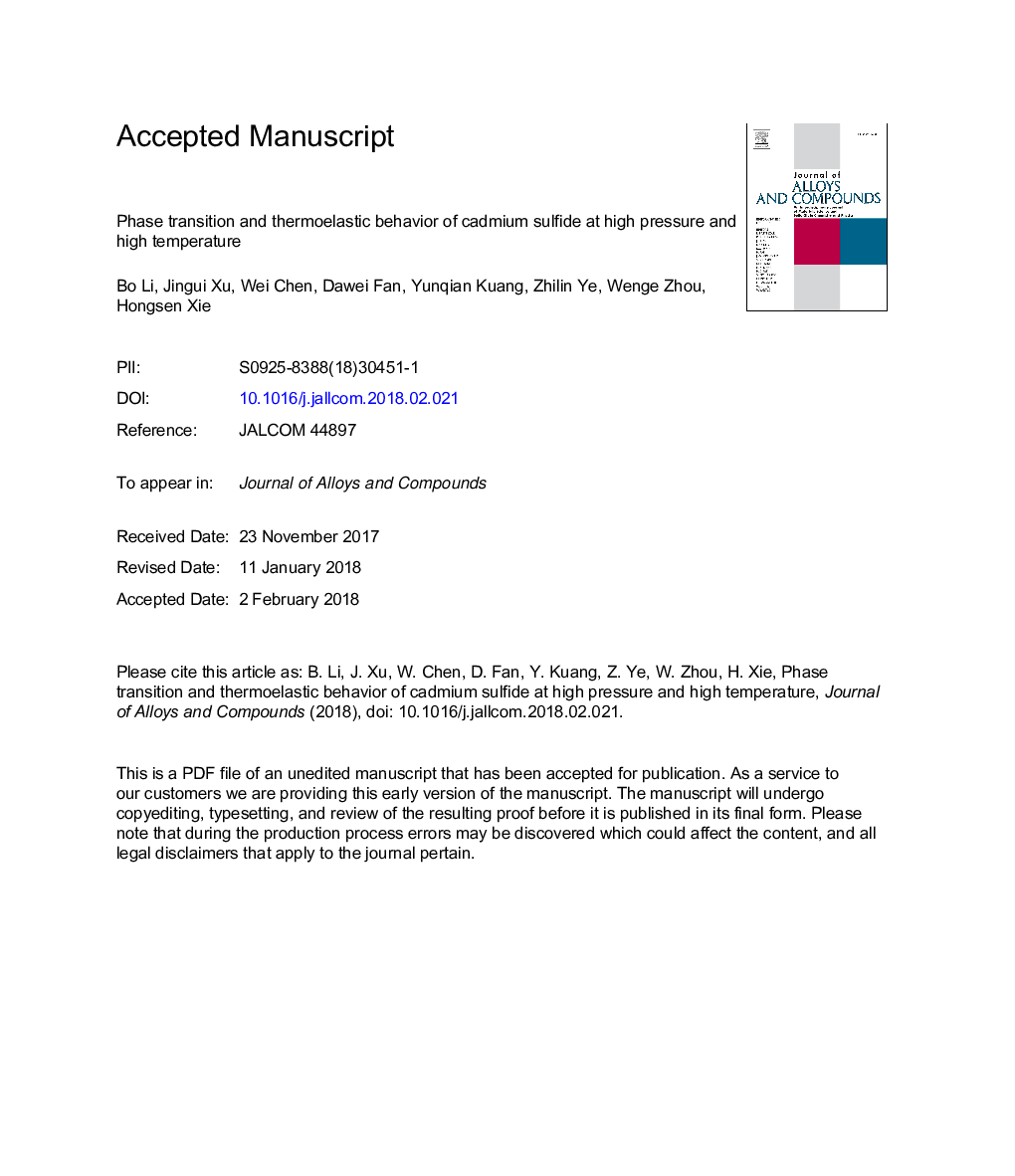| Article ID | Journal | Published Year | Pages | File Type |
|---|---|---|---|---|
| 7993246 | Journal of Alloys and Compounds | 2018 | 32 Pages |
Abstract
The phase transition and thermal equation of state of cadmium sulfide (CdS) were studied at high pressure and temperature conditions up to 21.9â¯GPa and 650â¯K, by using in situ synchrotron angle-dispersive X-ray diffraction and an externally-heated diamond anvil cell (DAC). A pressure-induced phase transition from wurtzite structure (WZ) to rocksalt structure (RS) was observed at about 2.6â¯GPa, which was agreed with previous studies (2.0-3.5â¯GPa). In addition, fitting of the experimental data by means of the third-order Brich-Murnaghan equation of state (III-BM EoS) gives the bulk modulus K0â¯=â¯81.6 (13) GPa, its pressure derivative Kâ²0â¯=â¯3.68 (13), and the volumetric thermal expansion coefficient α0â¯=â¯2.97 (25)â¯Ãâ¯10â5â¯Kâ1 for RS phase of CdS. Simultaneously, the thermal expansion coefficient (α0â¯=â¯1.51â¯Ãâ¯10â5â¯Kâ1), and its axial thermal expansivities (8.30â¯Ãâ¯10â6â¯Kâ1 and 5.96â¯Ãâ¯10â6â¯Kâ1) along a-axis and c-axis for WZ phase of CdS at ambient conditions were obtained, respectively. Moreover, it was found that the phase transition pressure from WZ (or ZB) type to RS type of cadmium chalcogenides (CdS, CdSe and CdTe) is quite similar by comparing their phase transition pressures. Furthermore, the elastic properties of metal sulfides (ZnS, CdS, HgS, PbS) with the same crystal structure but different metal cations were also discussed, and found that the bulk moduli for the RS phase of metal sulfides (ZnS, CdS, HgS, PbS) have a negative correlation with the cation radius, but a positive correlation with the electronegativity.
Related Topics
Physical Sciences and Engineering
Materials Science
Metals and Alloys
Authors
Bo Li, Jingui Xu, Wei Chen, Dawei Fan, Yunqian Kuang, Zhilin Ye, Wenge Zhou, Hongsen Xie,
